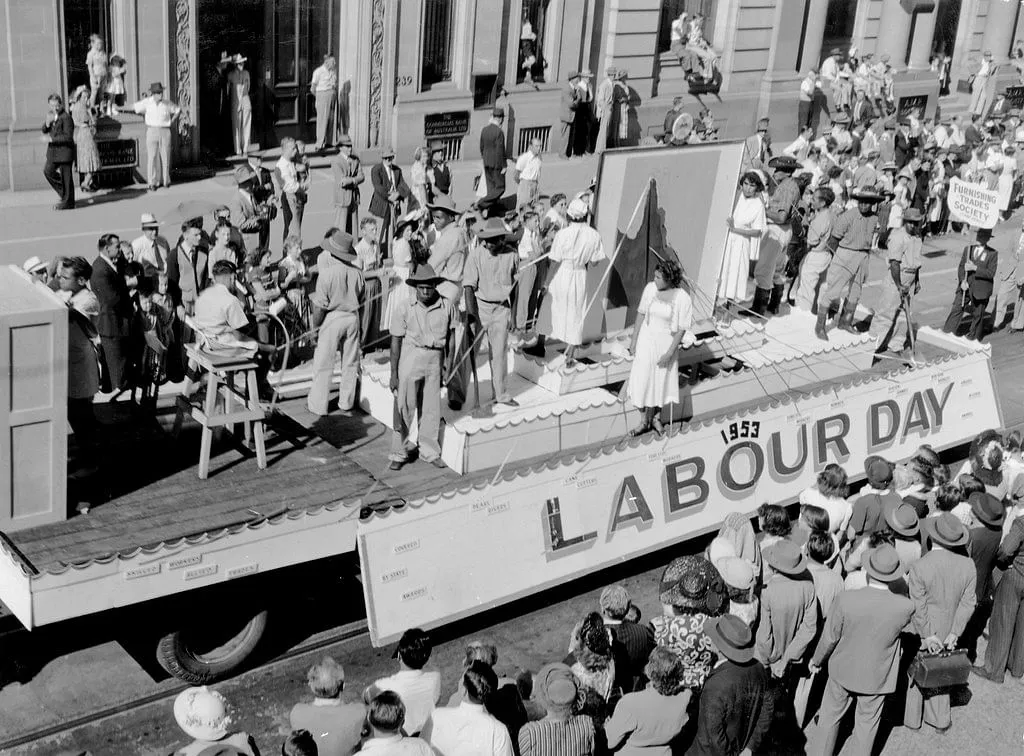The majority of European countries, including Sweden, France, Poland, Finland, Norway, Spain, Germany, Italy, etc., observe May Day, Labour Day, or International Workers’ Day as national holidays. The day is also observed in Panama, Cuba, Mexico, Guyana, Peru, Uruguay, Brazil, Argentina, and Chile. May Day is observed at various periods throughout the year in Australia, Canada, and the USA.
In 1886, a union of workers in Chicago, Illinois, USA, declared a general strike in support of an 8-hour workweek. The strike had become aggressive. The cops began shelling to disperse the throng. Public areas were bombarded with bombs. Several workers were hurt, and many were killed.
After a few years, an international movement began with marches and uprisings occurring on International Workers’ Day every year. In Chennai, the capital of Tamil Nadu, May Day was first observed in India in the year 1923. Currently, trade associations from all over the nation organise parades.
Labour Day is celebrated in order to pay respect to the working class, which was once asked to work for more than 8 hours a day and was paid less. The day is exclusively dedicated to workers who should know their rights.
Under no circumstances should workers be asked to work for more than 8 hours a day. Working hours may be extended, but the extra remuneration should be paid in addition to regular wages.
May Day is a festival for workers across the globe and it respects them. It is also a traditional northern hemisphere spring festival.
Every year on May 1, people celebrate Labour Day to recognise and praise the excellent work done by employees and other members of the labour class. The primary driver behind the Day was the eight-hour day movement, which advocated for a schedule of eight hours for work, eight hours for play, and eight hours for rest.
The purpose of celebrating Labour Day is to honour the enormous amount of effort put in by the working class, to inform them of their rights, and to safeguard them against exploitation.
May ushers in a new season, one in which the chilly winter weather is replaced by milder conditions and the landscape starts to bloom with new life. As we take in the beauty of the natural world all around us, this change in seasons inspires a feeling of renewal and hope.
May Day is also a time of unity and togetherness. People of different races and cultures come together to celebrate the arrival of spring through various traditions such as dancing, singing, and exchanging flowers and baskets. These festivities bring a sense of community and connection, as people celebrate the joys of life together.
In 1886, workers across the United States organized a national strike to demand an eight-hour workday. The protest in Chicago’s Haymarket Square turned violent, resulting in the deaths of several workers. To honour their sacrifice, the International Socialist Conference declared 1 May as International Workers’ Day, a day to recognize the struggles and achievements of workers worldwide.
Overall, May Day is a time of celebration, unity, and reflection. It allows us to appreciate the beauty of nature and the importance of community, while also reminding us of the on-going struggles for social justice and workers’ rights.
The May Day timeline includes significant events related to labour rights and workers’ protests throughout history.
} In 1886, May Day became known as International Workers’ Day, a labour holiday celebrated worldwide.
} In 1894, the United States established Labour Day as a national holiday to recognize the contributions and achievements of workers.
} However, in 2014, Turkey attempted to ban labour rallies on May Day due to violent incidents occurring during previous marches and riots.
} In 2015, despite a government ban on marching to Taksim Square in Istanbul, Turkey, protestors took to the streets on May Day. Clashes between police officers and demonstrators resulted in violence.
Dr. Khalid Ul Islam, Associate Biostatistician.
Disclaimer: The views and opinions expressed in this article are the personal opinions of the author.
The facts, analysis, assumptions and perspective appearing in the article do not reflect the views of GK.






